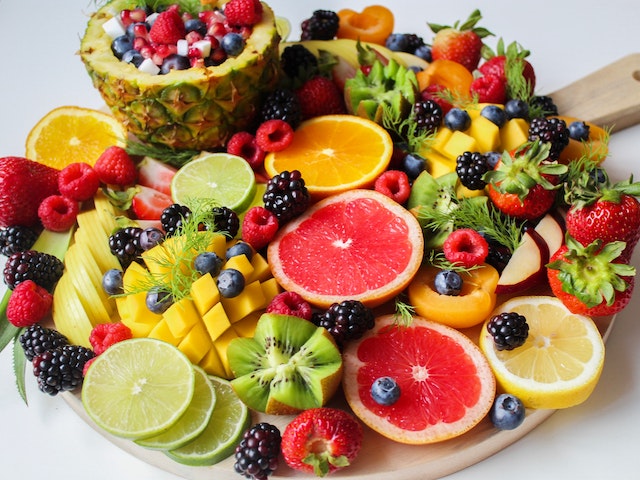Health benefits of citrus fruit
The Rutaceae family includes citrus fruits. Oranges, including tangerines, clementines, and satsumas (sometimes known as easy-peelers), grapefruits, lemons, and limes, are the citrus fruits that you are most likely familiar with. Kumquats, Buddha's hands (or fingered citrons), Meyer lemons, finger limes, minneolas, bergamot, pomelo, yuzu, and ugli fruit are just a few of the numerous lesser-known citrus fruits.
Historical accounts show citrus fruits were first brought to the Americas from Europe in 1493. They were frequently added to tea for their energizing aroma. Sailors utilized citrus fruits to treat scurvy since it was recognized that they had therapeutic properties even then. Citrus fruits were also employed as an antidote to some toxins, including venom, and to treat nausea and vomiting, particularly in plague victims.
Vitamin C
Citrus fruits may become less necessary as a means of mitigating the effects of the disease. However, they are rich in vitamin C and certain chemical compounds called flavonoids, both of which have been demonstrated to mitigate the effects of coronavirus, hence decreasing the likelihood of developing pneumonia. In light of the recent pandemic's catastrophic health effects—it has been called a modern-day plague—may I propose adding an orange to the customary apple to receive some preventative vitamin C?
As an antioxidant, vitamin C fights the damage caused by free radicals in the body and is crucial for enhancing our immune systems. This is crucial because free radicals trigger inflammation, which, if left unchecked, can develop into serious conditions like heart disease and cancer. Iron absorption, which is critical for maintaining healthy blood flow, is aided by vitamin C. To get the most out of the iron in your salad greens, try tossing in some citrus fruit segments or squeezing some fresh lemon or lime juice on top. You may also eat half a grapefruit as an appetizer, dessert, or a glass of freshly squeezed orange juice with your dinner. Desserts made of citrus fruits are excellent for doing just that before and after a meal.

Flavonoids
Flavonoids, a kind of plant nutrient with health advantages, are also found in citrus fruits. They add to the fruit's vibrant hue and fragrant scent. Hesperidin, hesperetin, quercetin, and tangeretin are only a few of the sixty flavonoids found in citrus fruits. These flavonoids benefit health by enhancing glucose metabolism and insulin sensitivity, decreasing the chance of developing diabetes. They help maintain the health of the intestinal lining and decrease inflammation. More significantly, research demonstrates that these chemicals are so beneficial to health that they even have anti-cancer capabilities. Scientists are examining them more extensively to determine whether these advantageous components may be developed into supplements and demonstrate the value of citrus fruits as functional foods or nutraceuticals. There is just another compelling argument in favor of consuming citrus fruits on a daily basis.
Tangerine tangeretin and nobiletin are flavonoids that have been linked to reduced risk of cardiovascular disease, diabetes, liver disease, and kidney failure. Lastly, citrus fruit flavonoids have been found in the lab to protect against brain and nerve cell degeneration, principally due to their antioxidant properties. To that aim, studies are still being conducted to determine how much flavonoids are necessary to give this protective effect in humans. In the meanwhile, it's recommended to consume citrus fruits often.
Dietary fibre
In addition to aiding digestion and preventing constipation and diarrhoea, fibre is essential for gut health. Especially if you consume the white pith, citrus fruits are abundant in dietary fiber. Citrus fruits are a delightful way to come closer to the daily recommended fiber intake, which is important because many people do not consume enough of it. Citrus fruits have a higher concentration of soluble fiber than other fruits and vegetables, making them more digestible. Citrus fruits and dishes made with them stimulate the appetite and promote digestion in addition to the dietary fiber they provide.
Sugar content
Compared to many other fruits, citrus fruits have a relatively low sugar content. Oranges have about 12 grams of sugar per fruit, making them sweeter than lemons and limes, which have about 1.5 grams of sugar per fruit. With about 8.5g of sugar per fruit, grapefruits are not as sweet as oranges but also not as acidic as lemons and limes. Grapefruits of whatever color—yellow, pink, or red—have the same amount of sugar. Nevertheless, red grapefruits offer more vitamin A than other types, so choose those if you can. In addition, citrus fruits are a terrific low-calorie snack.
Citrate
Citrate, which is found in citrus juices like lemon and lime, is thought to help avoid kidney stones. Grapefruit juice, on the other hand, has a greater citrate content than either lemons or limes. If you want a sweeter alternative to the sour flavors of the other three fruits, orange juice also contains citrate. The kidneys will be flushed and the juice will be more tolerable if fresh water is added to the sour juice.
Eating citrus fruits
Most people only consume the pulp or flesh of citrus fruits after peeling them. This is due to its superior flavor, texture, and overall enjoyable eating experience. The peel, pith, and leaves of citrus fruits are also good for you. Polyphenols may be found in abundance in the peel of citrus fruits. These polyphenols include flavonoids, vitamins, minerals, essential oils, fiber, and carotenoids. Consuming both the pulp and the peel is best since they contain more beneficial components than the flesh.
Citrus fruit peel contains chemicals that provide antibacterial, antiseptic, and blood vessel-health benefits, including preventing plaque buildup, increased circulation, decreased cholesterol, and a slowed rate of cell aging caused by oxidative stress.
Use the peels of your citrus fruits to flavor water, infuse oil with pieces of citrus peel, or make fruit tea by pouring boiling water over these colorful skins. You can also add the grated zest to salads, make a zesty butter, and melt it over your veggies. Citrus peels may be frozen for up to three months and then used in stews, tagines, and curries.
Since they taste so good raw, citrus fruits are rarely cooked. Nonetheless, they may be incorporated into meals that feature fatty meats like hog and duck since their acid helps break down the fat and make it easier to digest. They are also a great complement to puddings and other sweets. Who doesn't enjoy a lemon tart or a key lime pie?
If you find it difficult to drink the recommended amount of water daily, you can flavor it with lemon juice or even just a slice of lemon. You may use freshly squeezed orange juice in smoothies but be warned that the sugar content of citrus fruits can elevate blood sugar faster than eating the full fruit, as there is much less fiber.
Because citrus fruits are highly acidic, consuming too many of them at once can erode tooth enamel and lead to cavities. Additionally, a component in grapefruit can interfere with treatments for high cholesterol, high blood pressure, and organ transplantation, so you shouldn't consume grapefruit if you're taking any of those.
As you can see, eating citrus fruits offers several health advantages, including increased appetite, a stronger immune system, and a slower rate of aging. There are a wide variety of citrus fruits to pick from, and they are all tasty. There are also several health benefits to eating citrus fruits.
References
- All about the citrus family https://www.realfoods.co.uk/article/all-about-the-citrus-family
- A Chef’s List of Unusual Citrus Fruits https://www.firstchoiceproduce.com/blog/a-chefs-list-of-unusual-citrus-fruits/
- Pharmacological properties of citrus and their ancient and medieval uses in the Mediterranean region bit.ly/3IqXTlB
- Citrus fruits are rich in flavonoids for immunoregulation and potential targeting ACE2 https://www.ncbi.nlm.nih.gov/pmc/articles/PMC8844329/
- Biochemistry, Iron Absorption https://www.ncbi.nlm.nih.gov/books/NBK448204/
- Chemopreventive Agents and Inhibitors of Cancer Hallmarks: May Citrus Offer New Perspectives? https://www.ncbi.nlm.nih.gov/pmc/articles/PMC5133085/
- Citrus Flavonoids as Promising Phytochemicals Targeting Diabetes and Related Complications: A Systematic Review of In Vitro and In Vivo Studies https://www.mdpi.com/2072-6643/12/10/2907
- Nutraceutical https://www.sciencedirect.com/topics/agricultural-and-biological-sciences/nutraceutical
- Citrus fruits as a treasure trove of active natural metabolites that potentially provide benefits for human health https://www.ncbi.nlm.nih.gov/pmc/articles/PMC4690266/
The post Health Benefits of Citrus Fruit appeared first on https://gqcentral.co.uk


